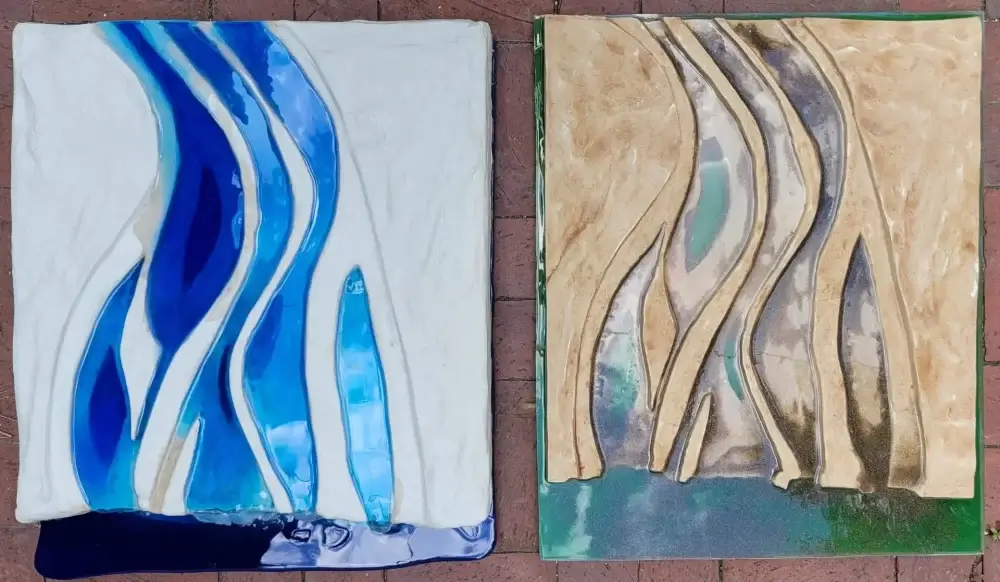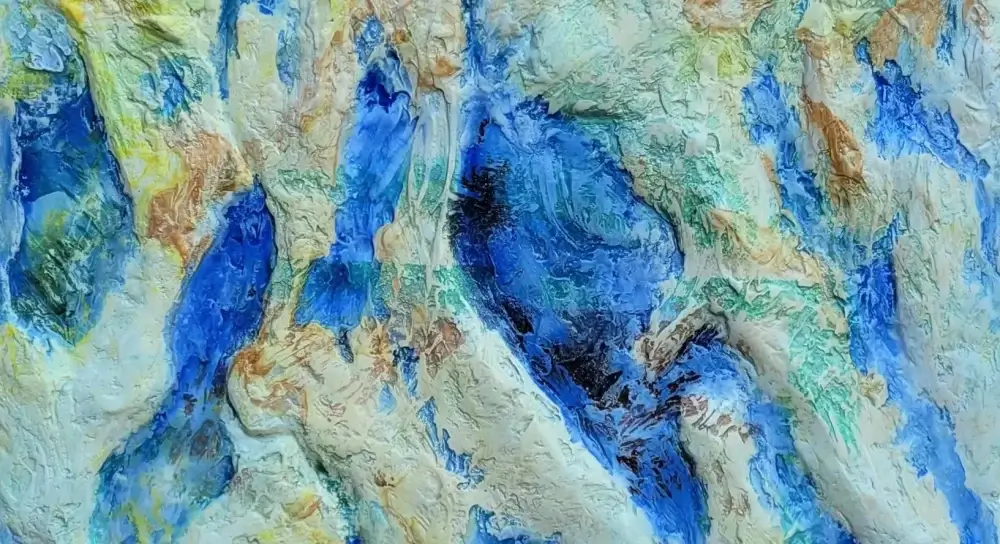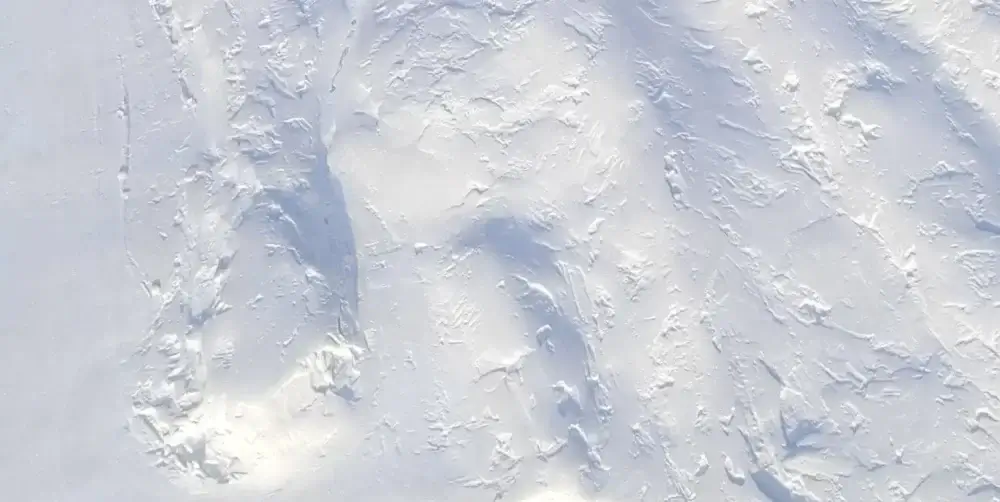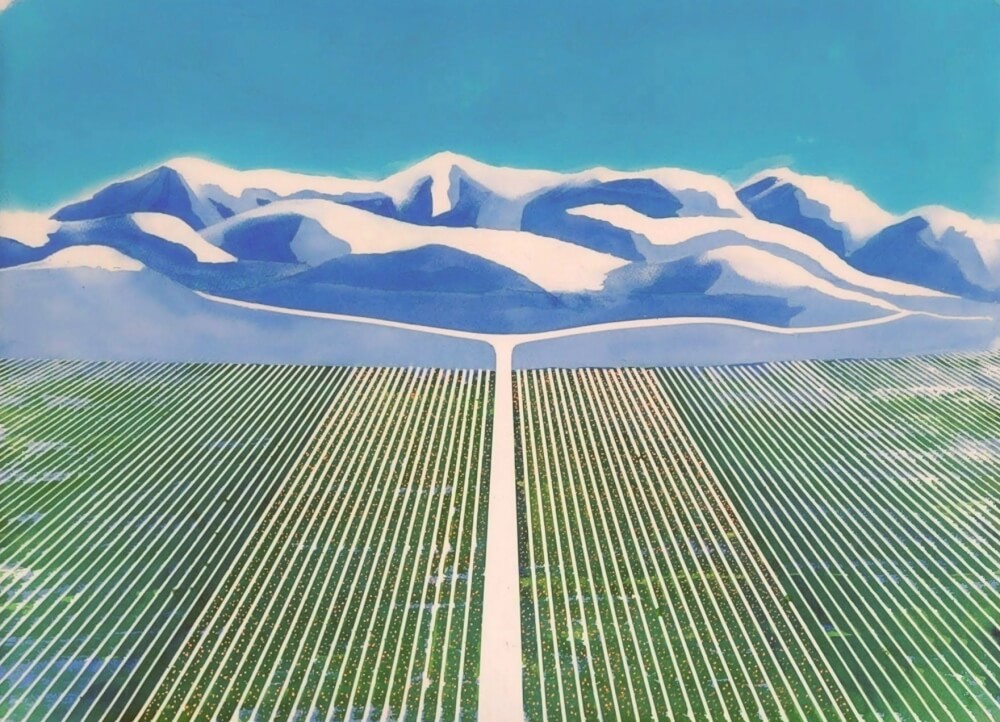

My watercolor art took a sharp turn into plaster this summer. The warm dry weather allowed me to work outside. This made the plaster and resin easier to clean. I created a design which was inspired by the braided curving river flows in Iceland. The runoff from higher elevations would lose energy in the flat coastal lands. It would then bend and weave through black volcanic earth. This created intricate patterns looking like veins. See Andy Mumford website for incredible landscape photography of Iceland. I re-used the design for the desert, which was cast in plaster as well from the original mold. The waterfall is made of resin and the plaster cast of the landform is supported by Styrofoam skinned with plaster. The resin base helps to protect the plaster, which has a tendency to crack until it is supported. These two pieces will stand the test of time.
The earth, however, may not stand the test of time. With our industrialization of the world, humans have caused global warming from greenhouse gases and carbon emissions. Many countries and people are working to reduce their carbon footprint, but many are not; see https://ourworldindata.org/co2-and-greenhouse-gas-emissions. We are all in this together. We need to take climate change seriously. This is necessary to save the glaciers, rainforests, and Earth One. We do it for the sake of our children. Here are ten simple choices you can make: https://oceanservice.noaa.gov/ocean/earthday.html











You must be logged in to post a comment.